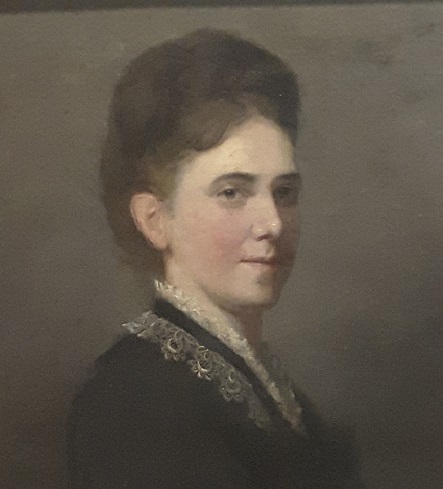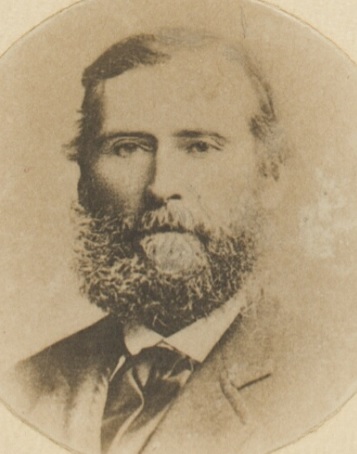Thomas Mitchell was born on 25th June 1818 and grew up at Bungonia, NSW (possibly Bungunyah – meaning camp by a creek according to JFH Mitchell). Thomas was 19 years old when he was made master of Mungabareena run near Albury in 1837.
His father, William Mitchell took a lease for land at the crossing place in February 1837 but died in September that same year. CH Ebden quit Mungabareena run in 1837 and perhaps felt sorry for the newly widowed Mrs Elizabeth Mitchell because AA Andrews wrote that Mungabareena then fell into her hands.
Thomas Mitchell was not alone in the area as his Uncles Paul, Aime and Charles Huon also took land near Mungabareena.
It would have suited the Huon brother’s to have Thomas and his mother and siblings nearby as the Huon’s could be supportive to their bereaved sister and keep a fatherly eye on their growing nieces and nephews. But it was also an attempt to take up as much land as possible in the area.
Mungabareena was also the site of the gathering of large numbers of Aboriginal people who came together each spring for trade, to settle disputes, organise marriages and compete in games of skill.
When CH Ebden took up Mungabareena in 1835 he built a set of cattle yards said to be the strongest south of the Murrumbidgee. He had a hut nearby and this would have been where Thomas Mitchell lived. It appears his mother and siblings came to Mungabareena in 1842 once the bigger home at Hawksview was built.
The gathering at Mungabareena continued into the 1840s but there is no record giving account to when or how it ceased operating. All we know is the location of the gathering was close to Albury’s water pumping station at Mungabareena.
In 1839 Thomas Mitchell took up Lower Yackandandah north-west of Yackandandah. This run was in Elizabeth Mitchell’s name and was stocked with sheep.
According to a Trove newspaper article 4 July 1929 Thomas Mitchell purchased Brimin station on the east side of the Ovens River where it joins the Murray in April 1848 from Benjamin Barber, a partner of Peter Stuckey – this would be either his brother-in-law or father-in-law. Peter Stuckey is said to be the first white man to take up this parcel of land in 1837-38.
In 1850 Thomas married Charlotte Stuckey, the daughter of Peter and Anne Stuckey of ‘Willie Ploma’ (many possums) from Gundagai.

In 1852 Thomas and Charlotte took up Tangambalanga run on the Kiewa River. They purchased the property from Dr George Mackay.
Thomas and Charlotte allowed part of this land to be used as a reserve for Aboriginal people.
There is an oral story of troopers arriving at Tangambalanga to arrest Merriman but Thomas’ wife, Charlotte went to the lagoon and sent a prearranged signal by tapping on the water to Merriman who was camped among the reed beds to stay hidden.
I spoke with uncle Tunny, a highly respected Wiradjuri man about this story and he told me tapping on water was a Black fellow way of sending signals.
Another incident regarding Charlotte at Tangambalanga was when she helped remove a spear tip from Merriman’s wife’s thigh.
A thigh wound is a typical injury from a payback ceremony.
There are no details of why the wound was inflicted.
Thomas Mitchell witnessed a payback ritual involving Merriman at Tangambalanga. Apparently, Merriman was made to stand naked in a clearing armed only with his helliman (shield) while three men, each armed with a spear threw their missiles at him simultaneously. Thomas reported it was an astonishing sight of athletic ability for as the spears came towards him, Merriman jumped into the air and spread his legs for one to pass beneath while wriggling sideways for the second spear to pass close beside him and deflected the other with his shield.
The Victorian Aboriginal Protection Act 1869 included the earliest legislation to authorise child removal from Aboriginal parents meaning the Aboriginal families at Tangambalanga reserve were vulnerable to this act.
A cruel example of this was the day Neddy Wheeler (Merriman’s younger brother) came home from hunting and found his wife Charlotte and children were missing. He was told they had been taken to a mission. He was later told they had died, however, this was a lie.
In 1875 Thomas Mitchell took up Bringenbrong run situated on either side of the Murray River. This meant that if authorities arrived on the Victorian side Aboriginal people could quickly escape across into NSW and vice versa.
Thomas Mitchell died in 1887.

Thomas Mitchell in middle age. Picture taken from JFH Mitchell’s papers
Thomas and Charlotte Mitchell had a daughter, Emma born 1867 or thereabouts. In 1891 Emma married Dr William Chisholm the son of John William Chisholm and Rebekah Chisholm nee Stuckey. It was not uncommon for first or second cousins to marry. This union further bonded Thomas Mitchell to William Bowman – William Bowman was the nephew of Mary Bowman, Mary Bowman was the mother of John William Chisholm. death article mentioning marriage of Emma to Dr William Chisholm
THE REFERENCES;


